Art center that is 'Open for All'
Taipei Performing Arts Center designed by Dutch firm OMA inspired by theater as center of civic life
By Kim Hoo-ranPublished : April 18, 2023 - 19:45
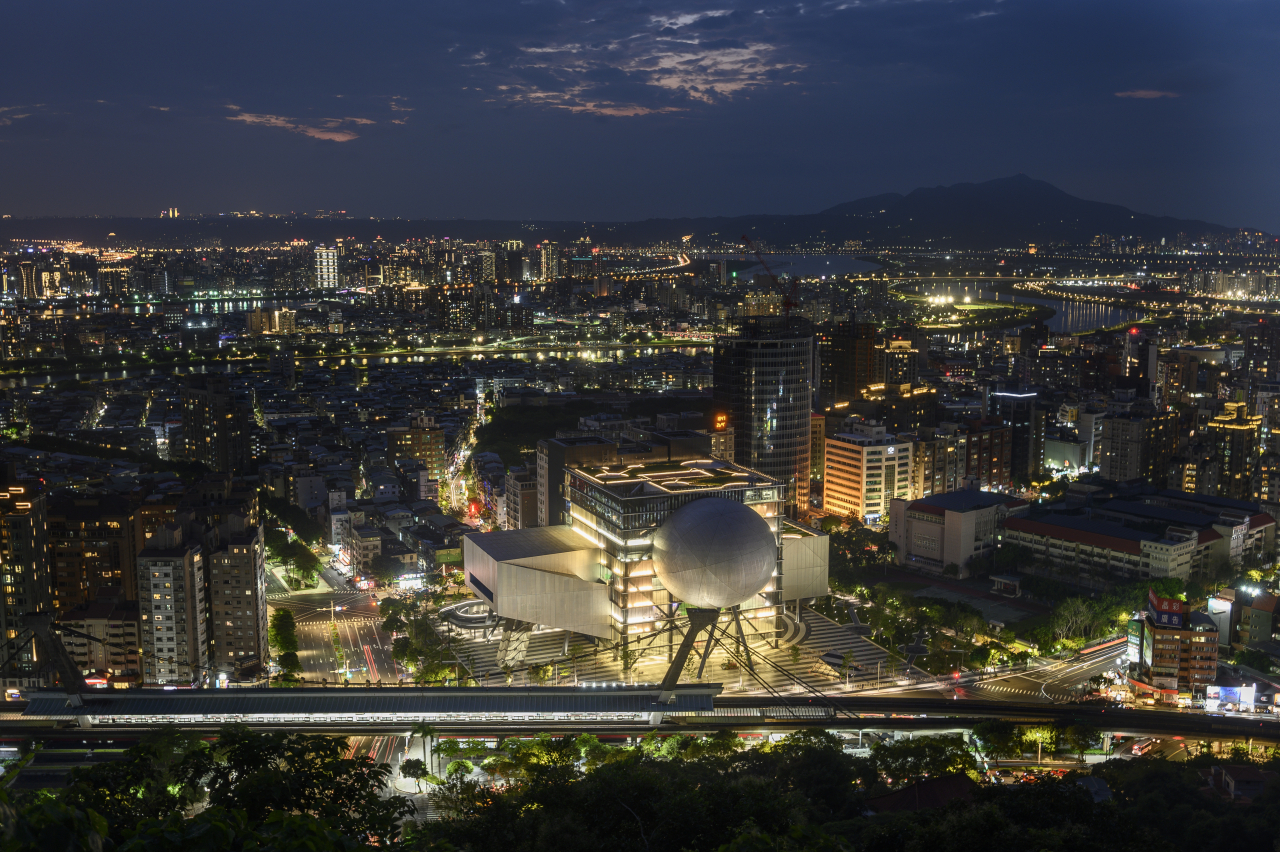
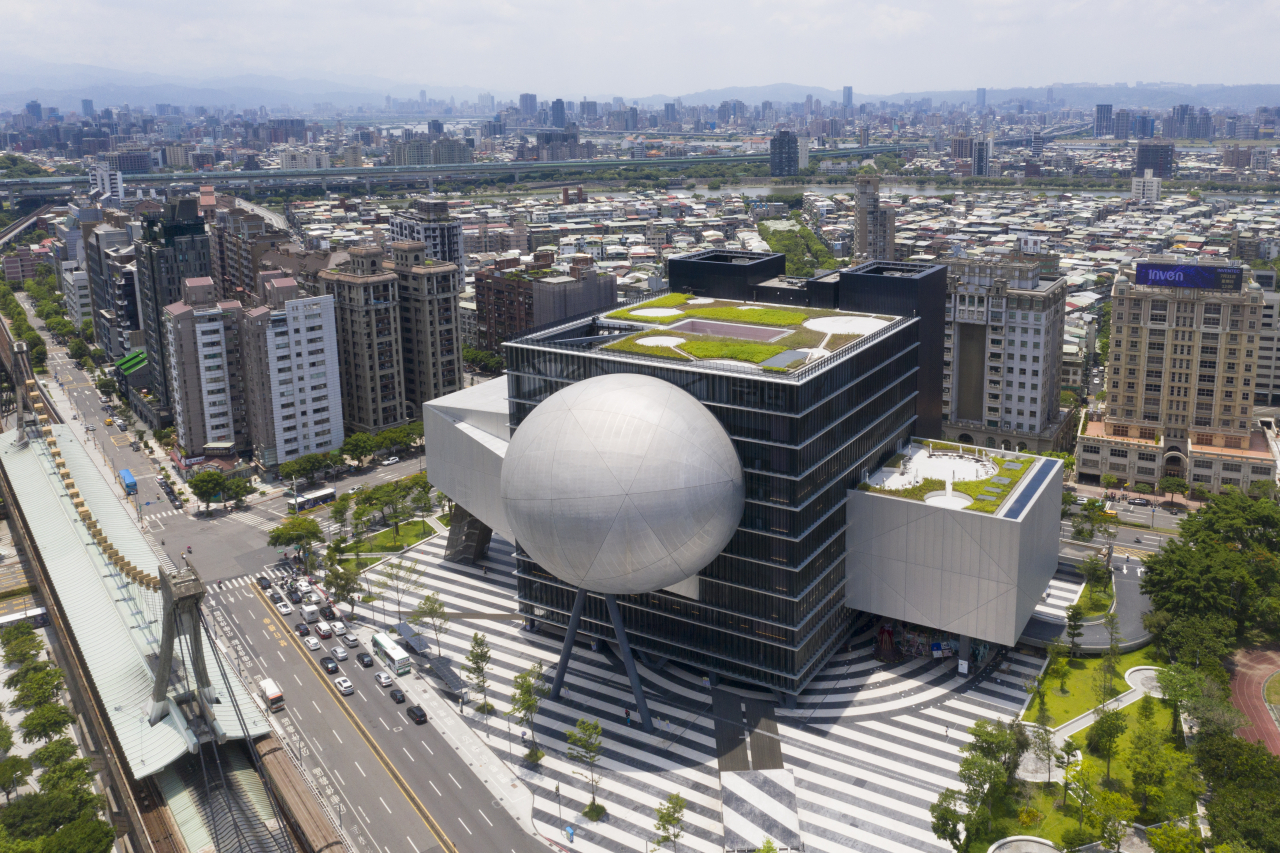
TAIPEI, Taiwan -- To some, it may look like a tumor is growing on the side of the building; to others, as if an asteroid has hit it. Or it may look like a planet docking against a cube, according to the description given in a brochure prepared by the building's architects.
The Taipei Performing Arts Center, the city's latest landmark, is a conversation starter. The center, composed of a central cube with three structures of different shapes -- a globe, a rectangle and a triangle wedge -- attached to it on different sides, is supported by several pillars that elevate it from the ground level.
For the people of Taipei, who must have long wondered what they were getting, the building officially opened in August 2022. The opening came 14 years after OMA won the design competition for the center's design. The project hit many bumps along the way, such as the discovery of a marsh after groundwork began and bankruptcy of one of the contractors, which delayed the project for a number of years. And then there was the COVID-19 pandemic, which forced the Netherlands-based architects to work remotely with local partners in the project’s final phase.
What Taipei got is a stunning “machine." That's how Rem Koolhaas, who led the OMA team on the project along with David Gianotten, described the performing arts center during a tour of the building on March 17. While the Taipei City Government’s missive required three theaters, the design team gave the city four -- three with the possibility of a fourth by opening up two theaters on opposite sides through a central cube. The resulting Super Stage measures 100 meters in length and 40 meters in width with seating possible on all four sides.
In the Greek tradition, theater was part of a city's civic life -- which is what Taipei Performing Arts Center as designed by OMA sets out to do.
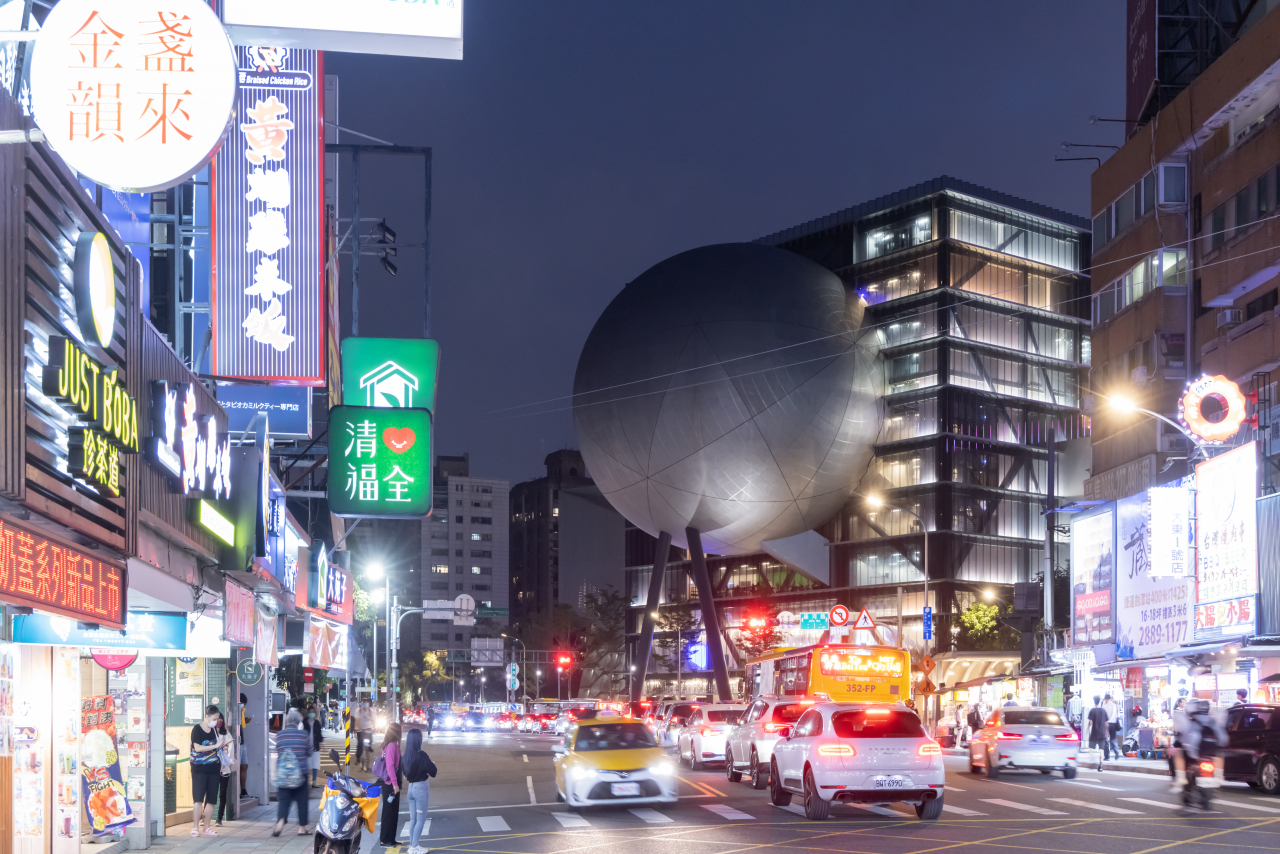
Situated next to the bustling Shilin Night Market, the arts center literally occupies a central space in the life of the city. The location itself was an inspiration for the architects, who chose to elevate the central cube with pillars so that the public could freely use the plaza space created on the ground level. With its small stage, the plaza is designed to encourage spontaneous, impromptu performances.
People without theater tickets can enter the building through the Public Loop entrance on the ground. The Public Loop takes visitors to the top of the building, where a wide-open rooftop garden affords a panoramic view of the surrounding mountains and cityscape.
A unique feature of the Public Loop are windows through which visitors can get a glimpse of the inner workings of the theater “machine,” and even catch performers at a rehearsal.
Koolhaas and Gianotten may have peeled a layer off the mystique of the theater, but perhaps the most dramatic achievement is the stripping away of the luxury typically associated with such establishments, installing democracy and egalitarianism in its place.
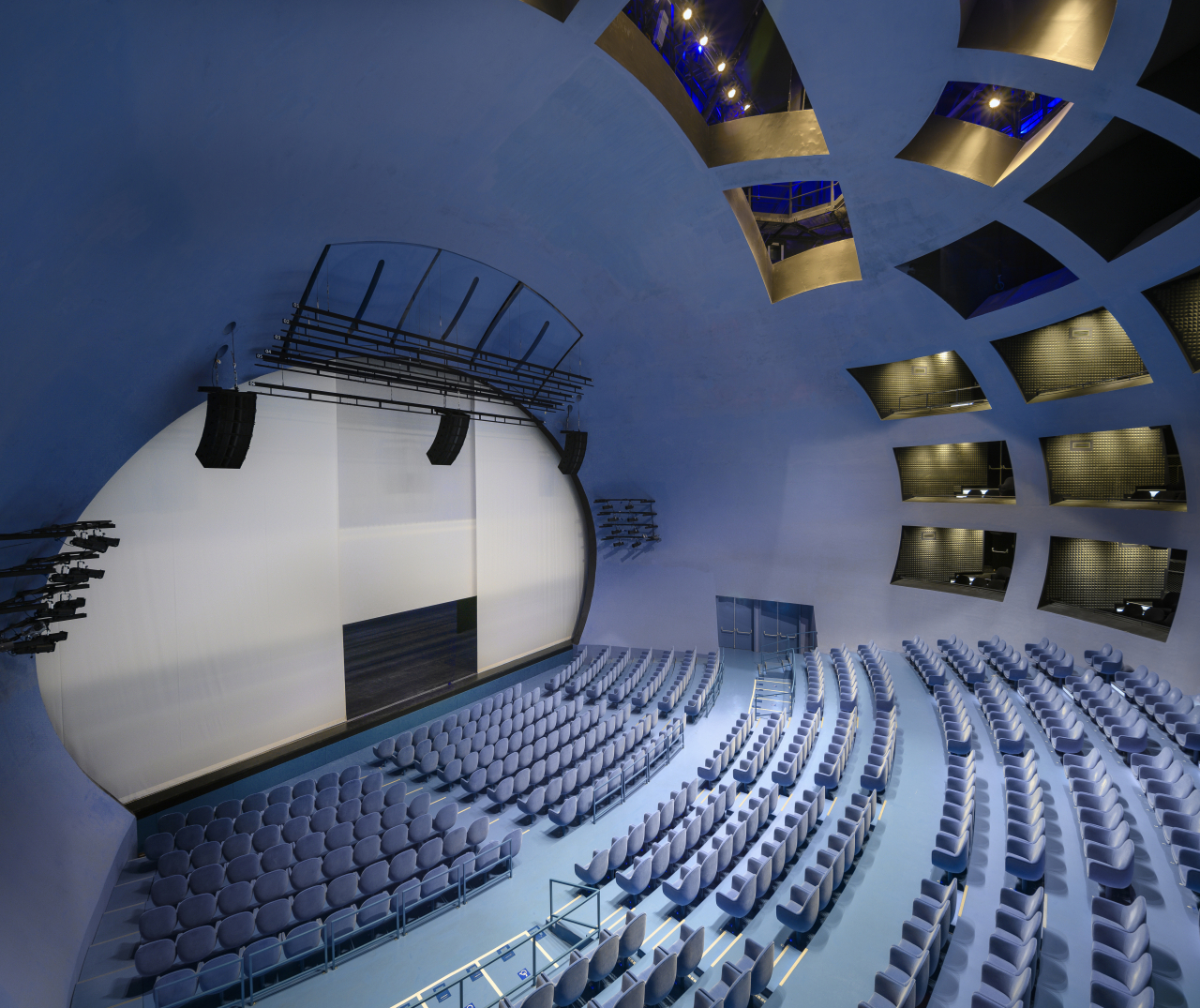
The center's theaters are in different shades of blue, from the deep blue of the Blue Box -- which hosts the most experimental works -- and the creamy light blue velvet of the Globe Playhouse, to the solid mass of light blue seats at the Grand Theater. Conspicuously absent are plush red velvet chairs and carpets typical of most theaters. Blue was chosen because it is the most neutral color when in the dark, according to Koolhaas.
The only touch of luxury in the entire building is perhaps the locally sourced marble on the floor of the second-floor lobby.
The center, which looks very spartan in daylight, takes on a very different look by evening when the “machine” comes to life. It glows softly in shades of pink and blue due to its walls and curtains, as colors and lights are diffused by floor-to-ceiling corrugated glass.
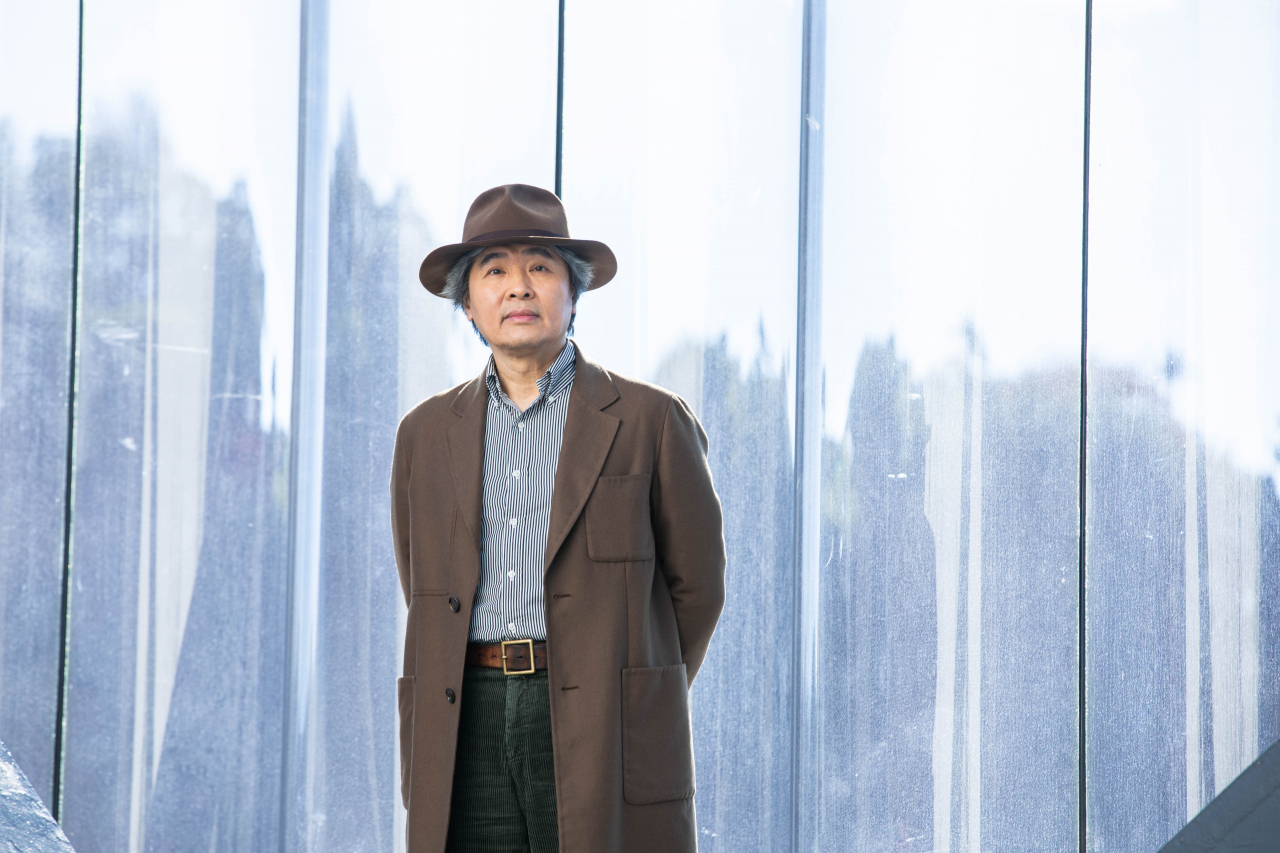
The center's democratic ideal as a hub of civic life is reflected in its mission: “Open for All.”
“'Open for All’ echoes the design of the building because it is really open for everyone. It’s very transparent,” said Austin Wang, CEO of the Taipei Performing Arts Center, speaking with The Korea Herald on March 17.
The center is open not only to all people, but its design makes it open to all possibilities. It challenges artists to come up with myriad ways of exploiting the possibilities in performance and nonperformance. The Super Stage, used only once since the center's opening last year, remains a challenge as works may have to be commissioned specifically for the extra-large stage.
Wang is undaunted by the challenges, and has big dreams for the center.
“In 10 years, (the Taipei Performing Arts Center) will be a major co-production center in Asia,” he said.
The real challenge, however, may be overcoming prejudices that limit the imagination.
"Imagine putting on Beckett's 'Happy Days' on the Super Stage," Koolhaas had suggested earlier during the tour of the building. It is a play with two people, one buried to her waist, and the other largely hidden, talking to each other.
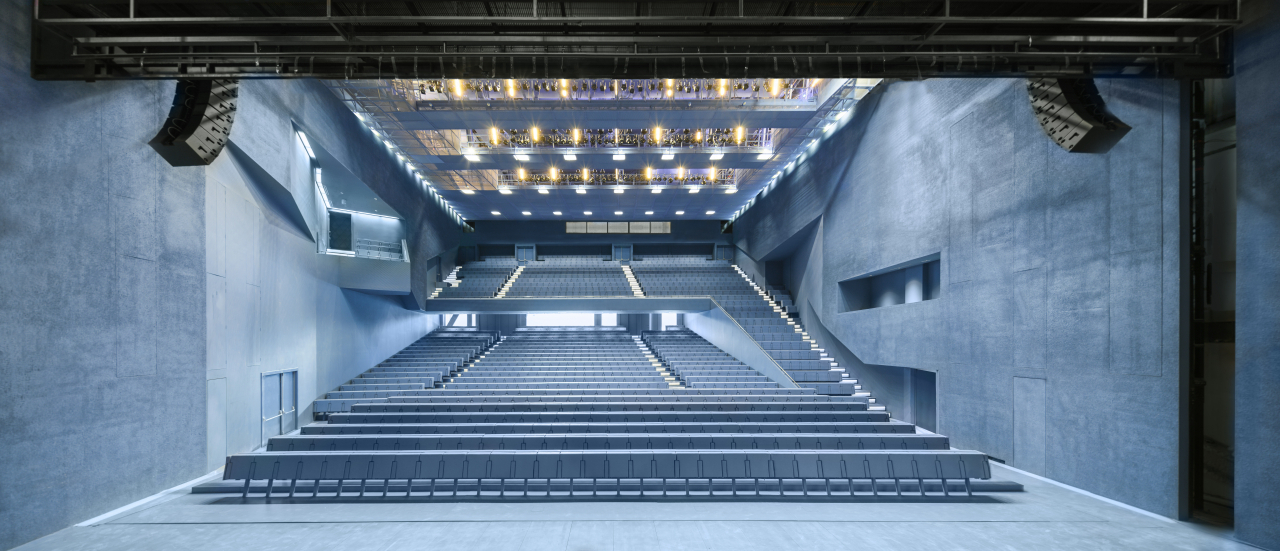
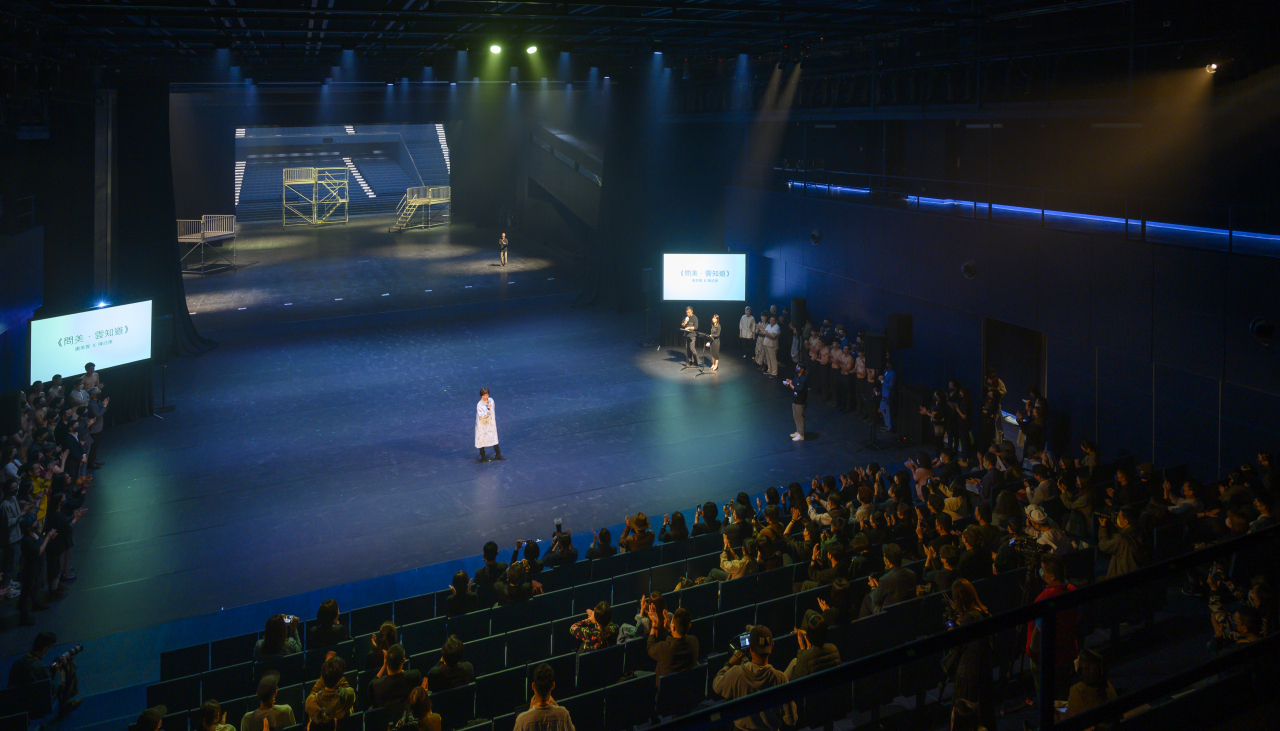





![[Herald Interview] 'Amid aging population, Korea to invite more young professionals from overseas'](http://res.heraldm.com/phpwas/restmb_idxmake.php?idx=644&simg=/content/image/2024/04/24/20240424050844_0.jpg&u=20240424200058)









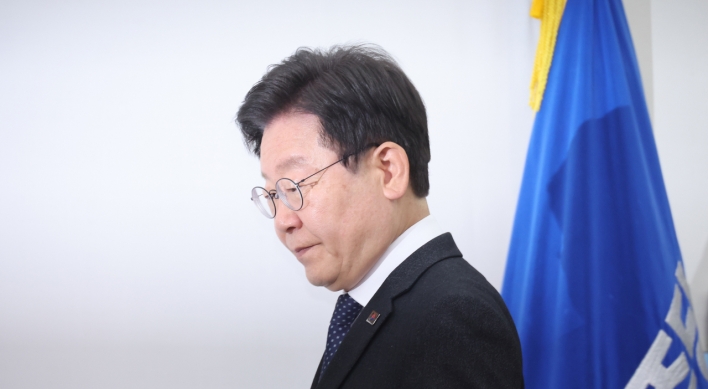


![[KH Explains] Korean shipbuilding stocks rally: Real growth or bubble?](http://res.heraldm.com/phpwas/restmb_idxmake.php?idx=652&simg=/content/image/2024/04/25/20240425050656_0.jpg&u=)

